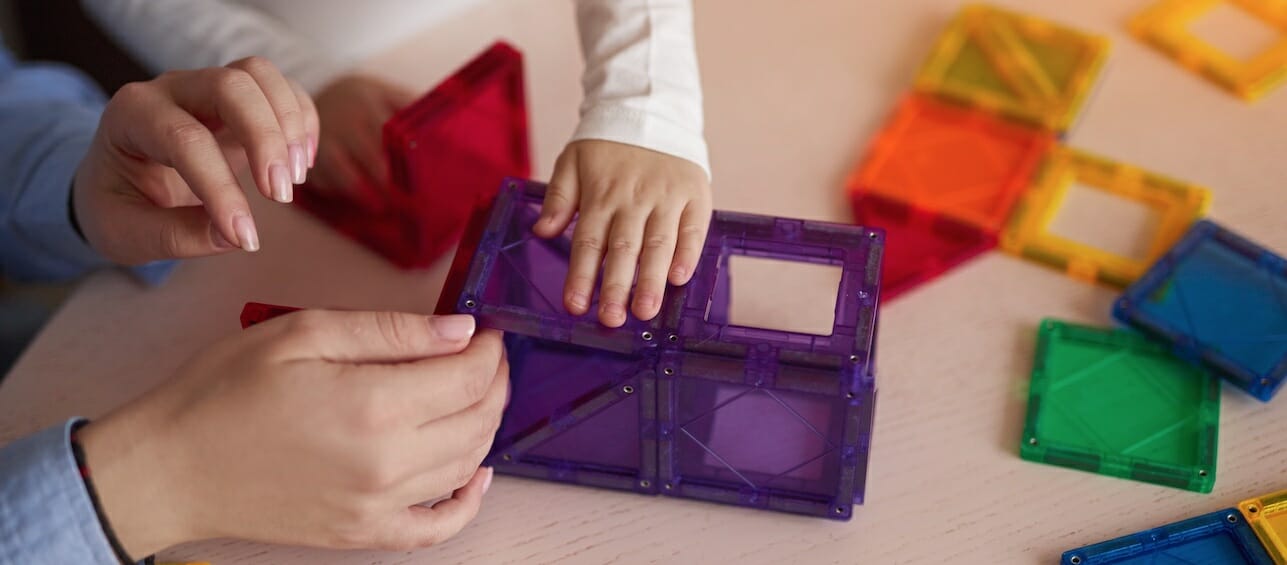Remember when you were young and were intrigued by the force between magnets? Taking magnets apart and putting them back together again is interesting to kids.
But magnets these days are smaller and stronger than they used to be. And newer products feature magnets that are often small enough to swallow, which can cause serious injuries or even death. In recent years, kids have needed emergency surgery after swallowing magnets.
Here’s what you should know about the powerful magnets that are on the market today.
What Happens When Multiple Magnets Are Swallowed
Many small foreign objects that are swallowed pass through the digestive system naturally and come out when a child poops (for example, a piece of chewed gum). This could be the natural course if just one magnet is ingested by someone.
However, when multiple magnets enter the body, there is a high risk of the magnets sticking together which can lead to severe health complications.
What Happens When Multiple Magnets Are Inside the Body
When multiple magnets enter the body separately, they travel through the stomach and intestines the way food does. The magnets can then become stuck together through the folds of the intestine or other body tissue.
The stuck-together magnets can pinch off the blood supply to the area and can cause tissue death, bleeding, infection, and/or obstruction of the gastrointestinal (GI) tract. This can be a life-threatening situation.
Magnets can also be a problem if they stick together in other areas of the body. For example, magnets in the nose, especially on either side of the nose with the nasal septum in between, can cause tissue damage.
In some situations, surgery may be necessary to remove the magnets and repair damage caused by the magnets.
Another problem that can occur is when one magnet is swallowed and is attracted to another ingested magnetic object in the body such as a button battery.
Types of Magnets That Are Swallowed
It may not be obvious that a toy or product contains magnets. Look closely at products and beware of the following:
- Tiny magnets may be hidden under plastic or other materials. Examples include magnets in reusable balloons, toy building sets, etc.
- Products marketed toward adults may contain high-powered magnets—such as in “desk toys,” artwork, stress relievers, etc.—that may be easily accessible to children in the home.
- Magnets may also be used in fake jewelry and piercings for older children, such as magnetic tongue piercings, lip piercings, nose piercings, etc.
Any of these might be accidentally ingested in older children or adults, as well as in younger children who may get a hold of the magnetic products and accidentally swallow them.
Household Rules for Magnets In the Home
Prevention is important when it comes to high-powered magnets. Make sure your entire family knows the dangers of small magnets and what happens if they get inside the body. Take these magnet precautions in your home to help keep your family safe:
- Avoid toys with high-powered magnets.
- Be aware of when magnets are used in products.
- If magnet toys are in the home, store them in a locked cabinet, closet, or box out of reach of children. Only allow supervised use of these toys, and always count each piece when they are played with to be sure none are missing.
- Avoid magnetic toys and products for children and individuals with developmental delays or for anyone who may be at risk of swallowing foreign objects like magnets.
- Avoid magnetic fake body piercings, stress relievers, and artwork if possible, and keep any adult magnetic desk toys out of the reach of children.
Signs Someone May Have Swallowed a Magnet
You might not witness a magnet being ingested into the body. Sometimes there are no initial symptoms. Signs a child has swallowed a magnet include the following:
- Coughing, choking, or gagging may occur right when a magnet is swallowed. However, with very small magnets, they may be swallowed easily with no coughing or choking.
- Later signs can be similar to a stomach virus (and mistaken for a stomach virus) including nausea, vomiting, abdominal pain, and fever.
What To Do If You Think Your Child Swallowed a Magnet
If you think your child might have swallowed a magnet, do not induce vomiting and do not give anything to eat or drink. Call the Drug and Poison Information Center 24/7 at 1-800-222-1222. If your child is having difficulty breathing or is in distress, call 911 immediately.





